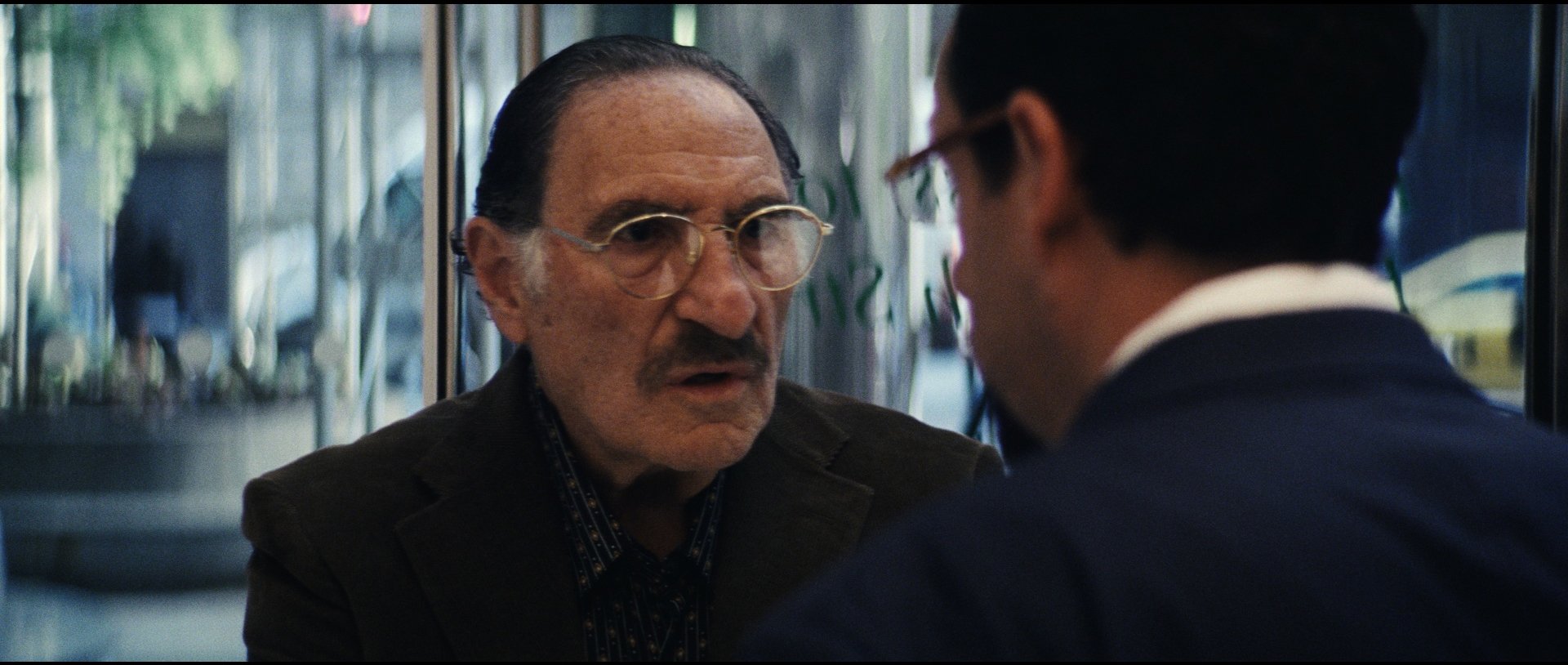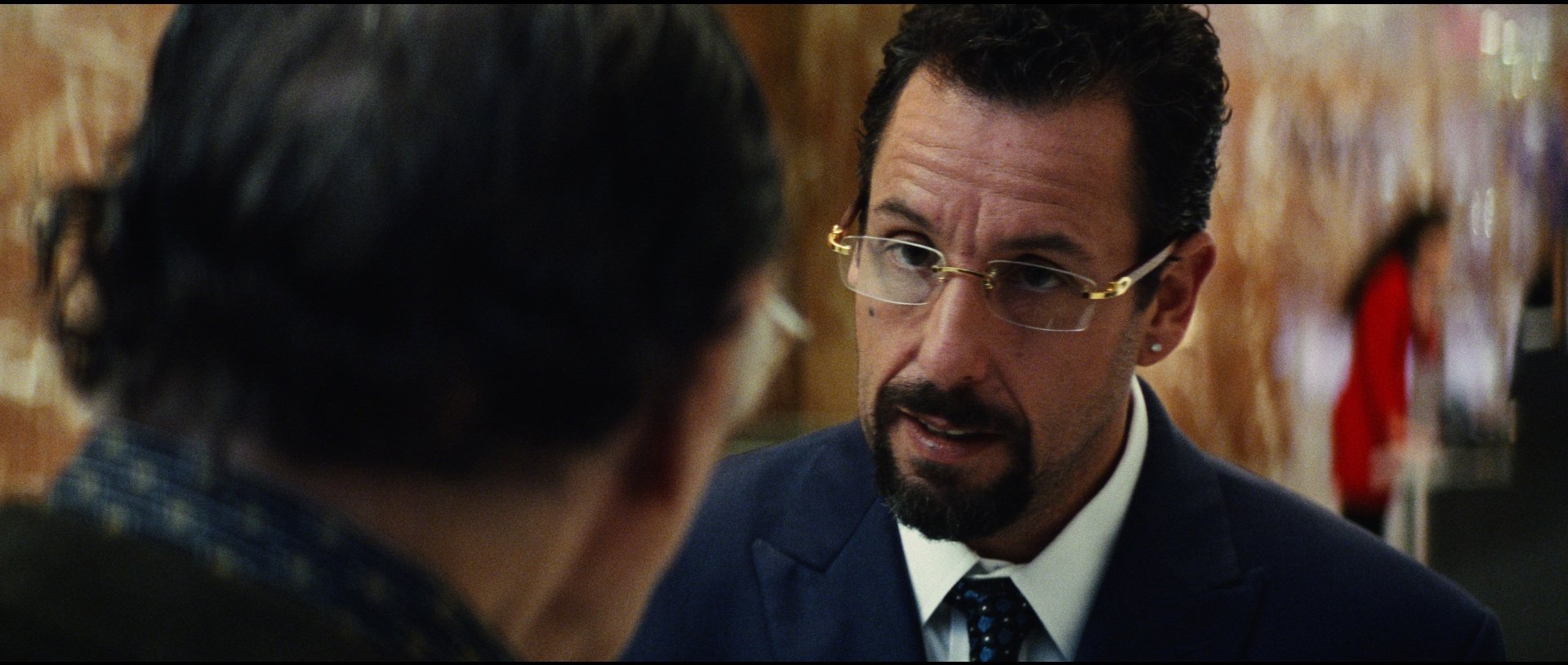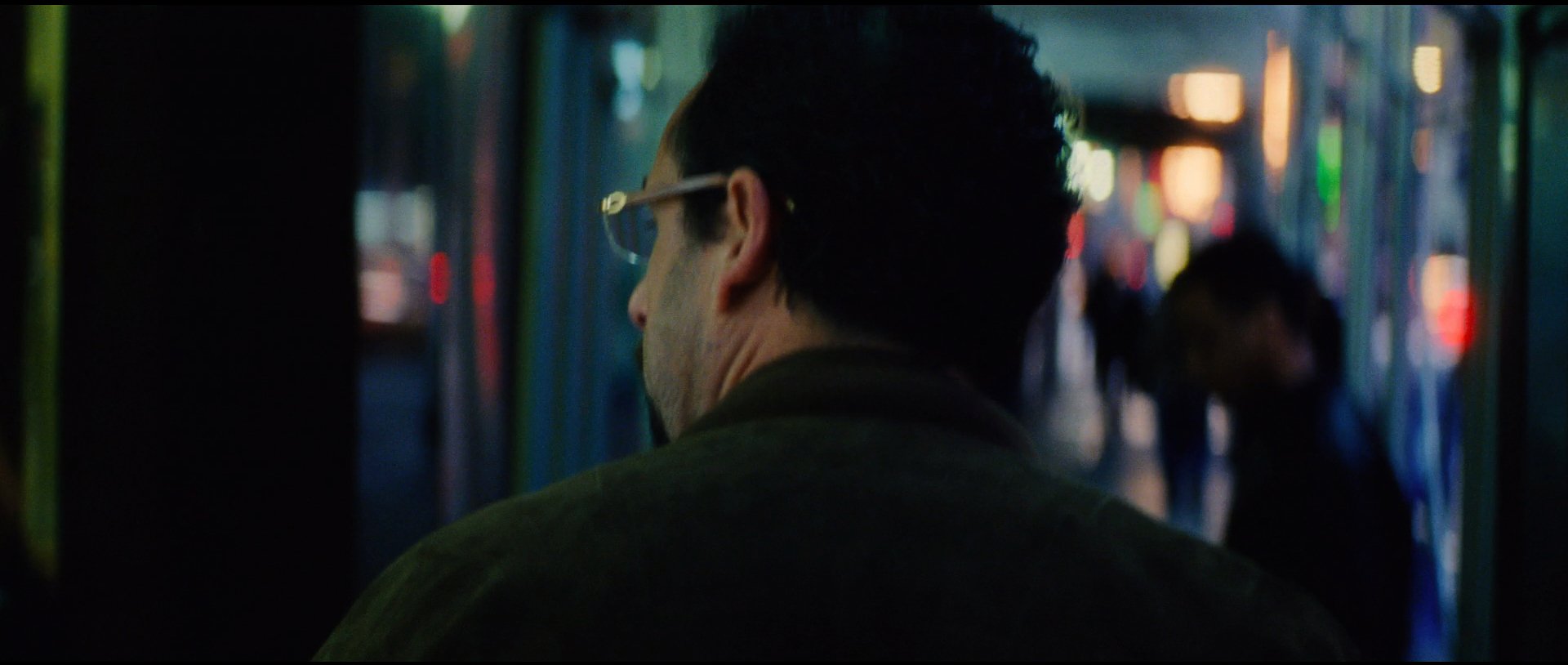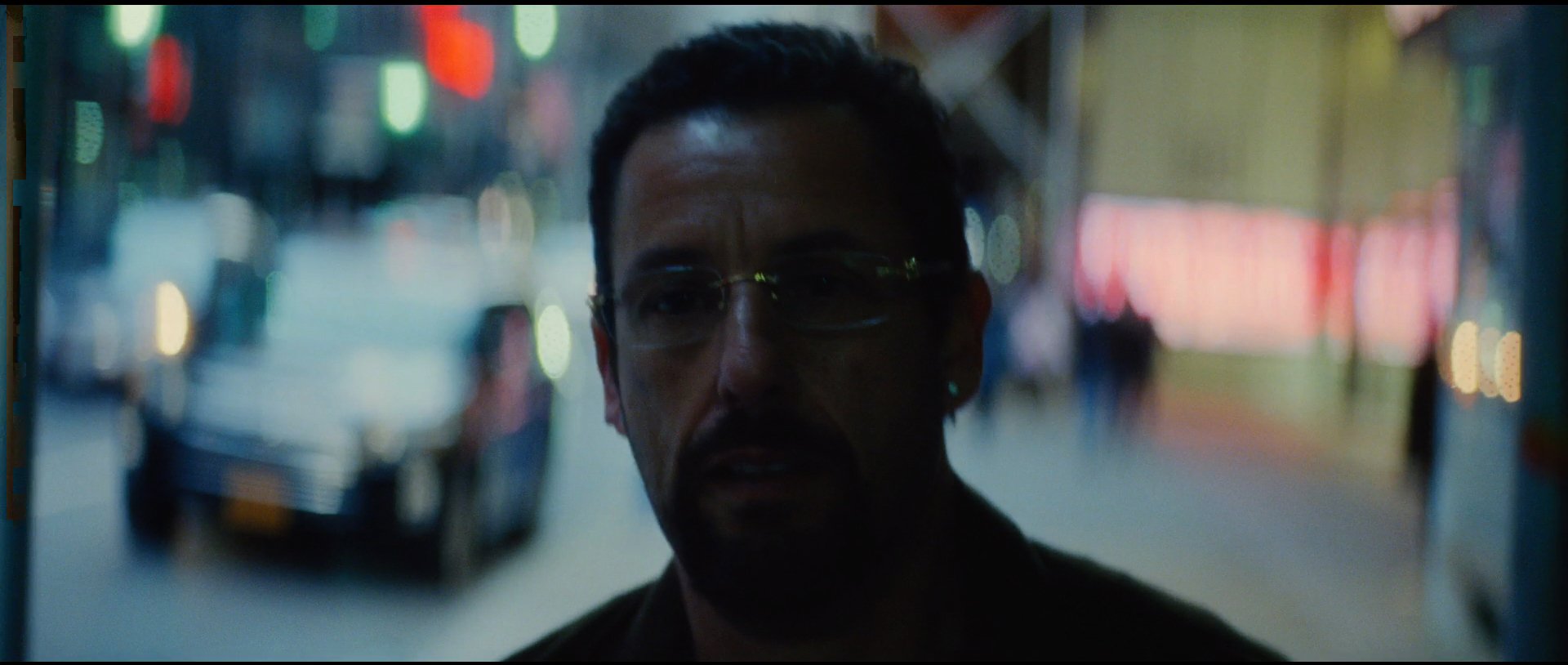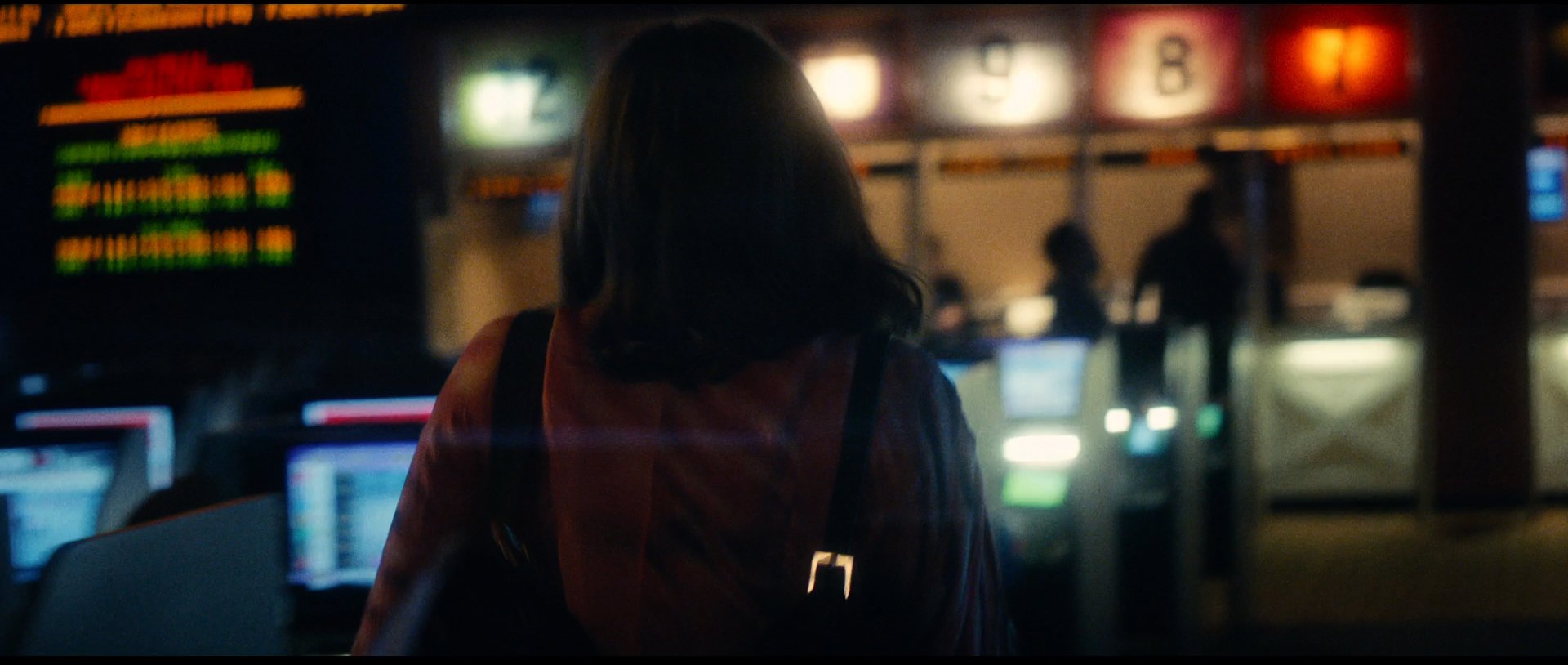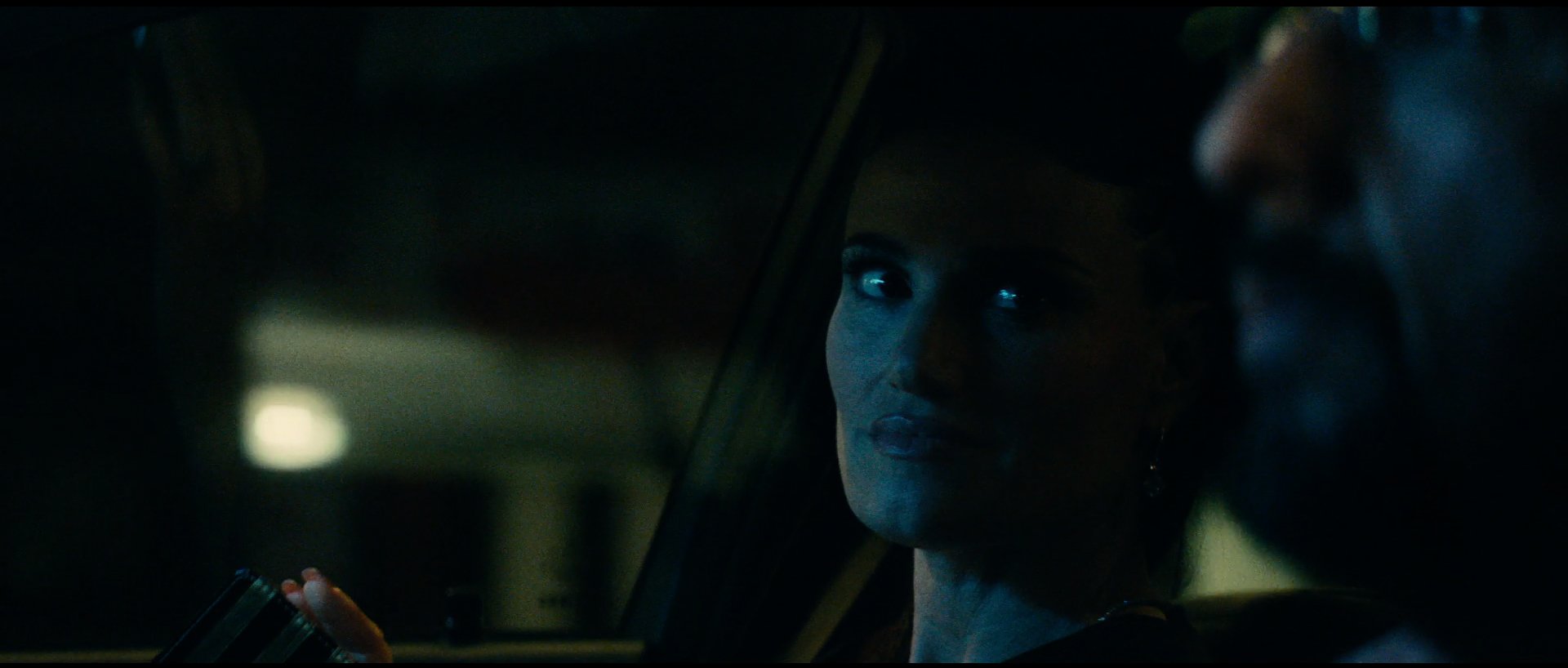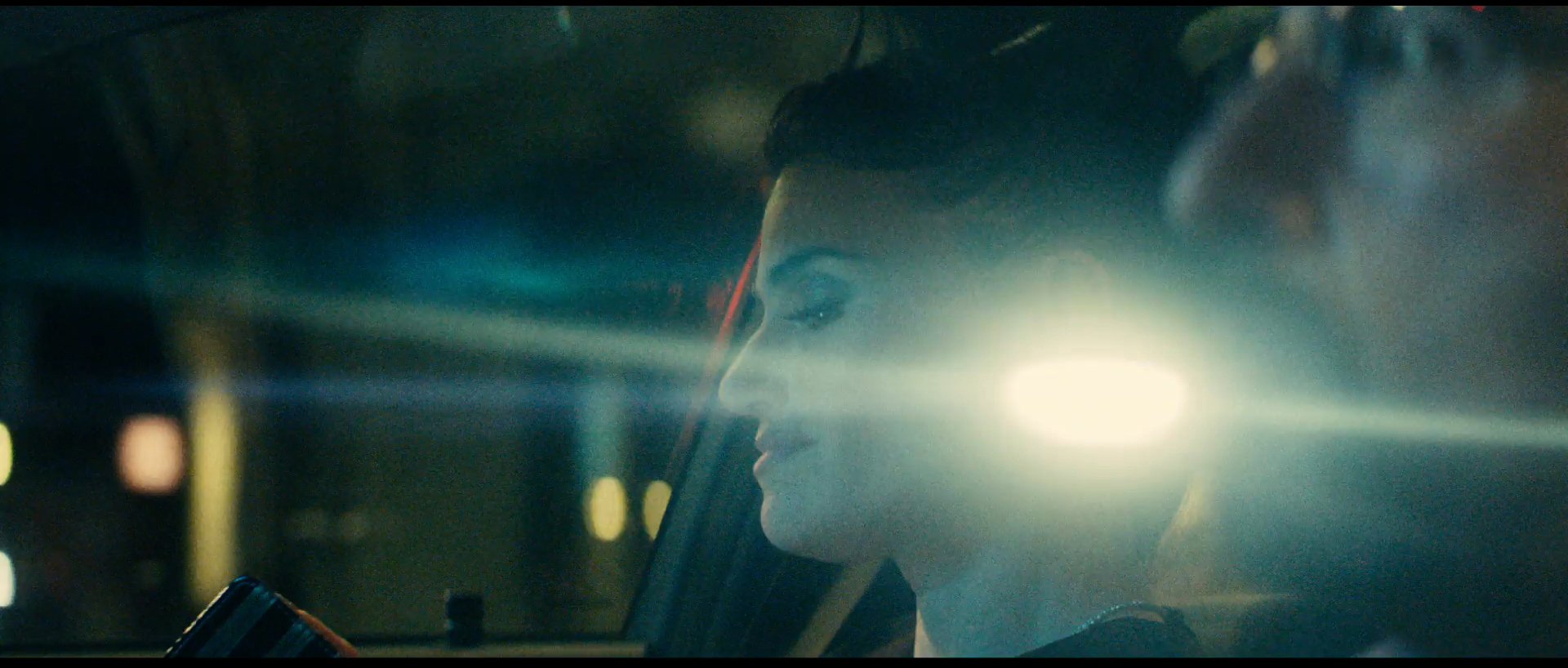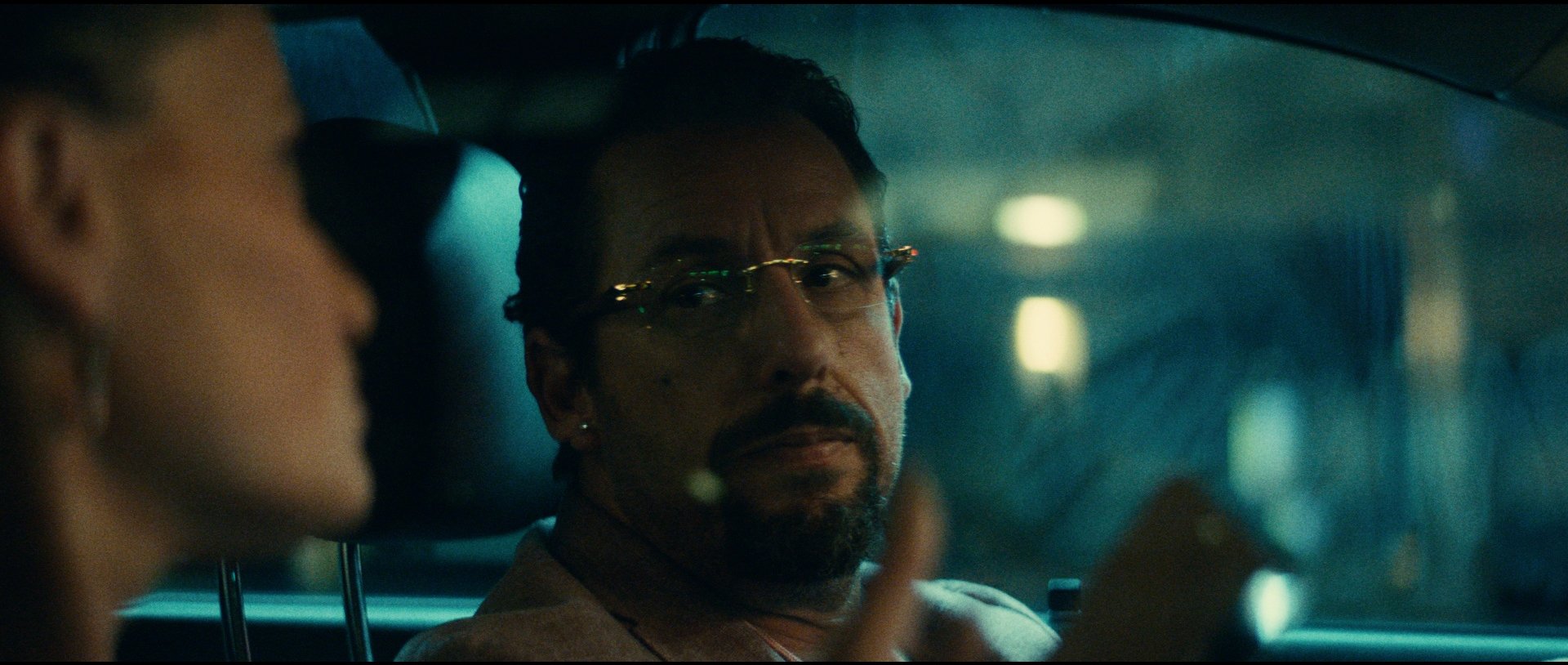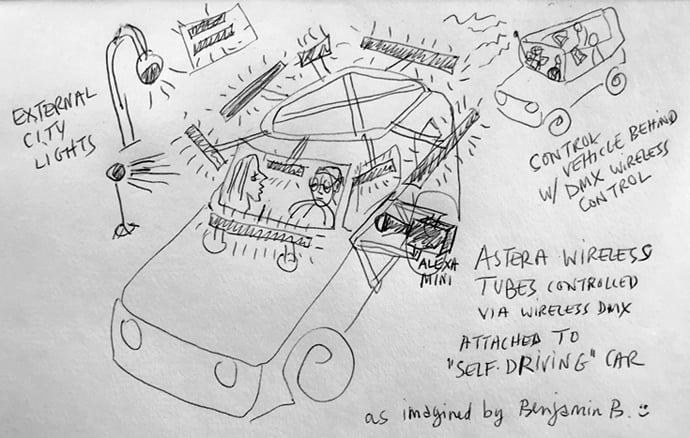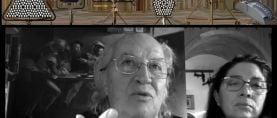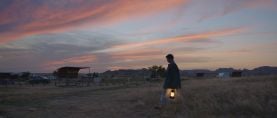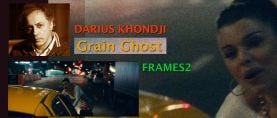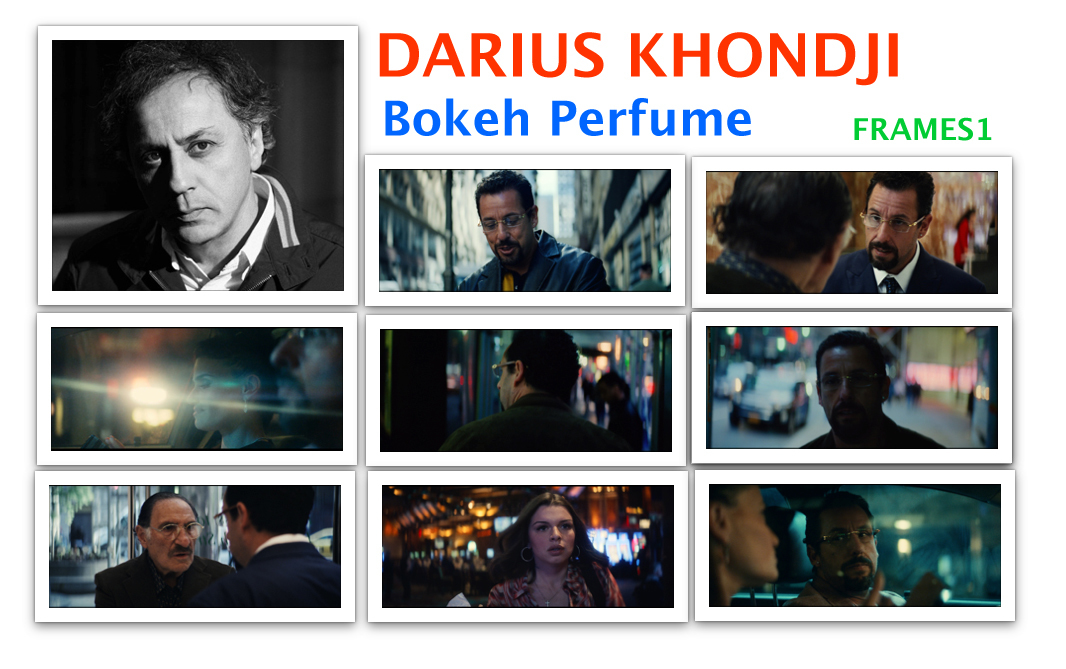
Bokeh Perfume -- Frames1 -- Uncut Gems with Darius Khondji, ASC, AFC
In this first conversation with Darius Khondji, ASC, AFC, about frames from "Uncut Gems", the topic is anamorphic bokeh.
Frames1
This post inaugurates a new occasional series: "FRAMES". The idea is to reflect on cinematography by discussing screen grabs with filmmakers.
NOTE: The numerous frames are available at their maximum quality, which implies waiting a moment for the page to load. :)
This first Frames post is about UNCUT GEMS by Josh and Benny Safdie, with cinematography by Darius Khondji, ASC, AFC. In addition to Darius I spoke with colorist Damien Van Der Cruyssen, gaffer Andrew Day and first assistant Chris Silano. Excerpts from these conversations are freely inserted alongside the images below.
This post is centered on anamorphic bokeh, by which I mean the entire portion of the image that is out of focus, not just the elongated bright lights in the frame. I believe that it is mostly the bokeh, not the focused image, that gives a lens its emotion and personality.
+++
watch on YouTube
+++
Uncut Gems
Uncut Gems is a powerful film by Josh and Benny Safdie that follows Howard Ratner, a fast-talking jewel salesman in Manhattan's Diamond District, as he seeks to make money with a rare gem, while evading dangerous loan sharks. Compellingly played by Adam Sandler, Howard is a charismatic but deeply flawed character, a compulsive gambler willing to risk everything to strike it rich. The Safdie brothers' fifth feature is a funny, whirlwind thriller that keeps you on the edge of your seat. Darius Khondji's cinematography imprints the film with potent imagery that blends gritty and painterly elements. If you haven't already, I urge you to watch Uncut Gems on Netflix.
+++
PV anamorphic, 5219 Pushed 1, Arricam, Alexa
Darius shot Uncut Gems principally with Panavision C and E series lenses, complemented with lenses from the G and T series, as well as 3 zooms. The film was mostly shot with Vision3 Kodak 5219 35mm 500 ASA Tungsten negative on 2 Arricam ST cameras and 1 LT for Steadicam, while night sequences were shot with Arri Alexa Minis.
Darius' decision to push the 35mm negative helps create the distinctive look of Uncut Gems. Pushing means leaving the negative longer in the development bath, yielding more sensitivity and more grain -- grain that contributes to the film's raw, gritty texture. Note that, while you can see the grain by zooming into the frames, you really need to watch moving images, like the trailer or the film on Netflix, to evaluate grain fully.
+++
Benjamin B: How long was the shoot?
Darius Khondji: We shot for only 29 days, and 2 days of reshoots at the end. It was very fast.
BB: Wow, that is fast. Why did you push the negative?
DK: I pushed all the negative one or two stops. The main idea was to bring out the natural grain, so that we could find it easily in the DI. Pushing also gives the film more texture, and helps deepen the blacks. You know, 5219 doesn’t have much grain.
BB: Kodak spent years trying to reduce grain.
DK: They wanted to create a very clean DI image, and they succeeded. But today, of course all the directors want film texture and grain! [laughter]
I would love to see an ultra-sensitive negative stock with texture, at 1000 or 2000 ISO, and with some grain.
+++
+++
Shallow Depth
The day exteriors in Uncut Gems are striking by their very shallow depth of field, creating a very evident bokeh background. Darius obtained this by:
1. Shooting with very long focal lengths, which have less depth of field than shorter ones.
2. Shooting in anamorphic, which implies twice the focal length of spherical lenses, for equivalent framing and camera distances (see link below).
3. Shooting with a wide-open aperture, which minimizes the depth of field.
+++
Benjamin B: Uncut Gems involves a lot of shooting with anamorphic long lenses wide open, often with a moving camera on a dolly or Steadicam. It's extremely difficult to keep the image in focus in those conditions.
Darius Khondji: I really wanted to enable the Safdie brothers to shoot the film the way they wanted to, without having to worry about focus. I have to thank my camera assistant, Chris Silano, who is infallible on focus. He used the Light Ranger from Howard Preston, which is an incredible product. Chris is very Zen. He was able to shoot an actor coming towards camera with a 500mm and keep it sharp.
After a week or two, Josh and Benny said to me: "What is this? We used to have to fashion our mise en scène around the focus, we had to do reshoots, but now we’re free!". So they gave the Light Ranger a big mention in the end credits.
+++
Chris Silano (first AC): I’ve done some of my best work with Darius' encouragement. I have to say that it's thrilling to work wide-open, it's like a high-wire act, you get addicted to the adrenaline. The focal lengths we used a lot were the 75, 100, 135, 180, the 150 Macro, and the zooms; the C360 was often on the B camera.
Now, if you shoot wide-open with anamorphic you get these imperfections; if you close down 1 or 2 stops everything cleans up. Darius usually had the lens wide-open or 1/4 down from wide open, he embraced that look. This is an artistic choice that takes a strong director of photography like Darius.
+++
Bokeh Perfume
Darius Khondji: Without me, the film might have easily been shot in Super 35, or Super 16. But we shot some comparison tests, and the Safdie brothers loved the anamorphic footage, compared to the spherical. They were taken by the presence of the faces, they loved
the close-ups. It's great when two young directors shoot anamorphic for the first time and really embrace it. They loved the long lenses in particular, and they used everything about anamorphic, better than I could.
DK: Here this could be a 75 or a 100 mm. The face is transformed, as if you put a magnifying glass on the close-ups. And this stretched landscape has an incredible strength.
BB: It's so unusual to have so little depth in a day exterior. I wanted to talk about the bokeh, and by bokeh I mean the entire out-of-focus background image, not just the oval highlights. In these frames the bokeh becomes like a painting.
DK: This city background is almost like another character, that is present in the image alongside the other characters.
DK: I’ve always been fascinated by old lenses. This C series, the other lenses and the zooms that we gathered with the help of Dan Sasaki from Panavision are very beautiful. The lenses were chosen one by one. I already knew a few of them, I had the serial numbers from previous films. Each lens is a like a perfume, like a fragrance.
BB: Exactly. This is something I've been thinking about a lot. The philosopher Marshall McLuhan has stated that, with media, the background is sometimes more important than the foreground. I believe that's true when looking at lenses: the personality and the emotion of a lens resides mostly in the out-of-focus bokeh, which, like perfume, is not visible -- I mean, we perceive the feeling of the bokeh, but we don't really pay attention to it.
DK: That's true, it’s not visible. It’s like an atmosphere that one feels when one is shooting the scene. It is almost like a rear screen projection around Howard Ratner.
BB: It's not just the shape of the bokeh but also its colors. It's great to see how, in this dialogue between the characters played by Judd Hirsch and Adam Sandler, each bokeh gives a different emotion: Hirsch's cooler sobriety versus Sandler's warmer illusions.
DK: The background adds life and emotion to the frame.
+++
Bokeh Isolation
BB: In the movie, Howard is increasingly alone, separated from his wife, his family, his lover, his colleagues… And you show that visually with the anamorphic bokeh. Here it looks like he's walking around in a dream.
DK: For me it was very important to isolate him, to have the focus on him, and not the rest of the city. This anamorphic scene, shot wide-open, is sort of claustrophobic. It creates a kind of mental space around him, we’re inside his head.
BB: And, later in the movie, when the story focuses on Howard's lover, played by Julia Fox, there is a similar use of bokeh to isolate her in a gambling casino's colorful environment.
+++
Night Bokeh
BB: I love the scene when Howard's wife, played by Idina Menzel, looks at him at he drives the car at night. The city is present as a series of varying lights in the background bokeh. It's shot with a long lens.
DK: We deliberately used the zoom in the car to isolate her. The camera was hung on the car, and we had Astera tubes lowered from a rack on the roof.
BB: You didn't want to use a low loader?
[A low loader is a vehicle that can tow a car on a low platform with room for lighting and camera crew and gear alongside it.]
DK: I use low loaders less and less. I prefer a camera on the side, or to shoot from the back seat. The low rider gives you a lot of control, but there is more life to the other way.
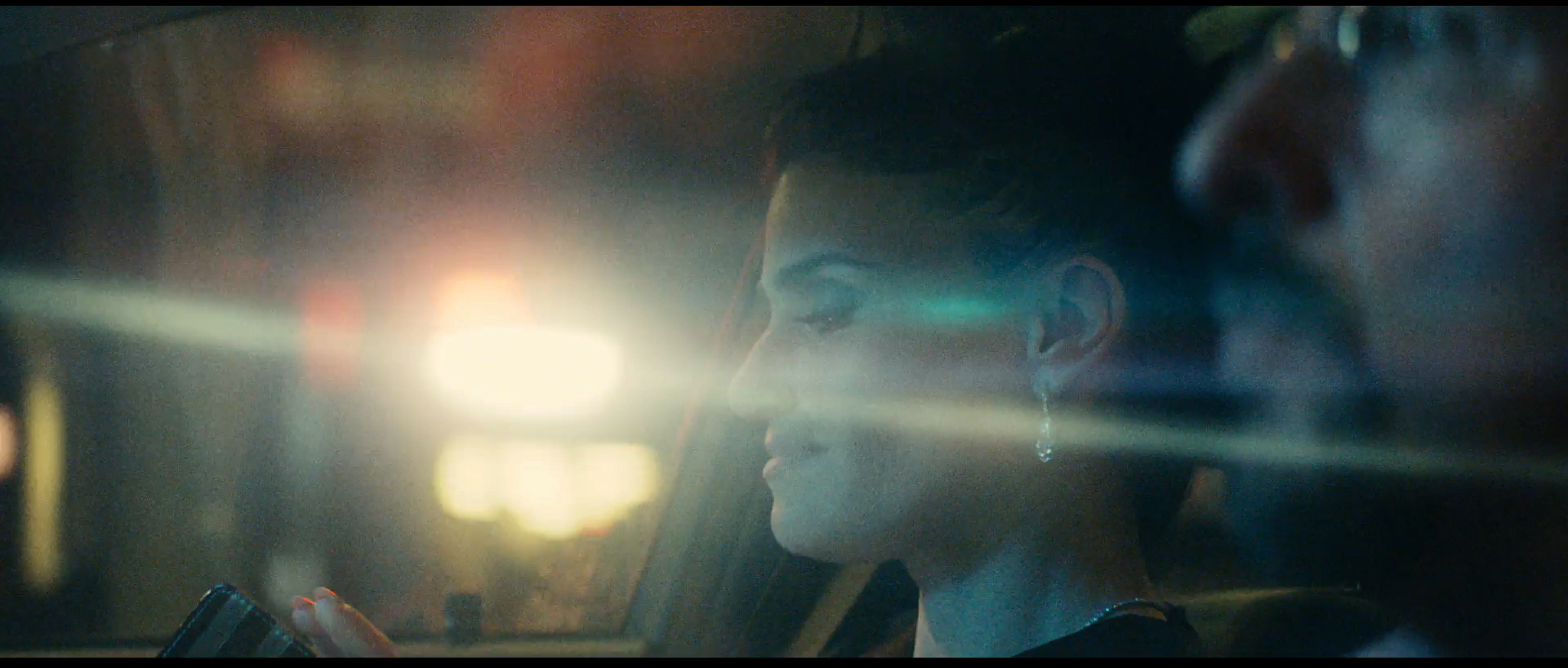
DK: It's wonderful to be able to shoot these moving, changing city lights in anamorphic. It's very natural.
BB: I love these anamorphic flares moving through the frame. It's like the bokeh background reaching into the car.
+++
Lighting the Car
After speaking with Darius and his gaffer Andrew Day, I drew the rough sketch below of the set-up for lighting the car for a night exterior, which involved:
-- Adam Sandler driving the car
-- The Alexa Mini camera attached to the car on the driver's side.
-- Astera battery-operated wireless Titan LED tubes attached to a rack above the car, and lowered above the frame to light the car interior
-- Custom short Litegear LiteRibbons LED strips inside the car with diffusion.
-- A vehicle following the car, with crew controlling focus, and varying the lighting with wireless DMX.
-- Lights from the city contributing impromptu lighting and flares
+++
Creative Chaos
Benjamin B: You and your team were able to change your lighting during the shot, via wireless DMX, to complement the city lighting.
Darius Khondji: Yes, we're controlling the Astera tubes in the car behind. Everything is live, we're changing the levels and the color live.
BB: These live changes have a chaotic aspect. Here you're mixing changing city lights with your own lights, with different color temperatures, different intensities, unpredictable flares, all of which are in movement. This complexity can't be calculated ahead of time, that gives a chaotic quality which, for me, is one of the strengths of the film.
DK: Chaos is a form of freedom. Sometimes you put things in place so as to have freedom when you shoot, so that performances, lighting can occur freely, and you let go of control... Of course, you try to do it so as to avoid the stuff that will be really horrible.
BB: So you create conditions for a kind of creative chaos?
DK: Voila! This approach brings a lot of life to the film.
+++++++
The next 2 posts of FRAMES from Uncut Gems will cover: the lighting list, mixing digital and film, the DI, night interiors, night exteriors, underexposure, lighting the sound stage set...
+++++++

+++++++
A big thank you to Darius Khondji
Thank you also to Damien Van Der Cruyssen, Andrew Day, Chris Silano and A24.
The photo and frames are chosen with, and courtesy of, Darius Khondji
+++++++
LINKS
netflix.com: Uncut Gems
wikipedia.org: Uncut Gems
wikipedia.org: Darius Khondji
nytimes.com: Uncut Gems review by Manohla Dargis
YouTube: Academy Conversations: Uncut Gems (Spoilers)
with Josh & Benny Safie, Adam Sandler & Julia Fox
YouTube: The Ballad of Howie Bling - music by Daniel Lopatin
wikipedia.org: Marshall McLuhan and his concept of figure and ground
+++
panavision.com: C series anamorphic lenses
kodak.com: Vision3 500T Color Negative Film 5219
aoassocies.com: Arricam System Users' Guide
arri.com: Alexa Mini
astera-led.com: Titan wireless LED tube
litegear.com: LiteRibbon Cinema Series
+++
thefilmbook: Practical Optics 3 - Introduction to Anamorphic
thefilmbook: Visit with Darius Khondji 1. Dimming, Colors, Direction
thefilmbook: Visit with Darius Khondji 2. Sources, Contradictions, Directors
+++++++

+++



